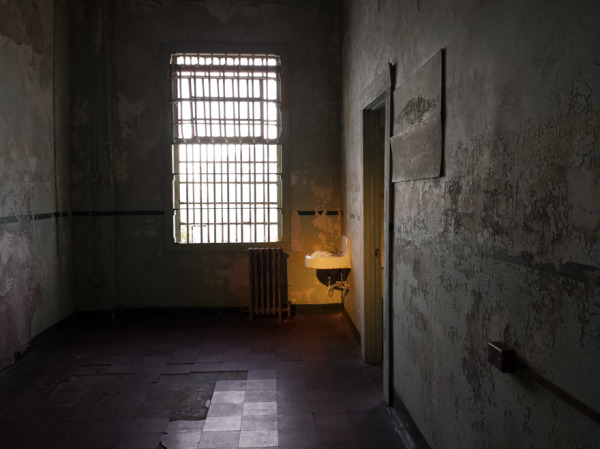
Housed in a looming federal penitentiary off the coast of San Francisco, “@Large: Ai Weiwei” explores the notion of imprisonment and encourages viewers to reflect on their right to free speech and expression. Ai Weiwei is a Chinese contemporary artist known not only for his large-scale installations, but also for his scathing criticisms of his nation’s government. Through his work, he endeavors to blur the line between art and political activism. The exhibitions, created specifically for Alcatraz, span four locations across the island, employing a variety of media but united by the common themes of captivity and resistance.
Ai’s work at Alcatraz focuses on the interplay between the environment and traditional Chinese aesthetics. In one installation, entitled “Blossom,” Ai fuses natural imagery with traditional Chinese arts as he scatters fragile porcelain flowers throughout various ward cells in the Hospital building. The installation has an ethereal quality to it. Artificial lighting illuminates each cell such that the flowers emanate an auburn glow that contrasts starkly with the eerie gray of its surroundings. The porcelain trinkets are meant to serve as a symbolic offering of comfort to the imprisoned and allude, ironically, to China’s Hundred Flowers Campaign of 1956 that culminated in a government crackdown against dissent.

The A-Block cells feature a sound-based exhibition that seeks to emulate the feeling of confinement. A single metal stool is at the center of each otherwise empty cell, as a sound clip plays in the background. Viewers sit facing away from the cell door, towards the decrepit back wall, completely immersed in sound that is not fully comprehensible and slightly unnerving.
Situated on the west side of Alcatraz Island, the New Industries Building houses a selection of sculptural and two-dimensional works. An enormous paper dragon, mouth agape, occupies the entrance of the structure and spans its entire ceiling. Meanwhile, a sea of portraits composed entirely of Lego bricks carpets the floor of the adjacent room. The portraits depict former inmates hailing from various backgrounds, suggesting that being stifled by authority is a universal human experience. The portraits humanize the prisoners and give them a sense of identity and relatability. Moreover, the artist’s decision to “paint” with Lego bricks juxtaposes the gravity of the subject matter— incarceration — with the childlike innocence associated with toys.
The fourth component of Ai’s installation, located in the Dining Hall, focuses on building a personal connection between the free and the incarcerated. Viewers write postcards addressed to specific prisoners throughout the world. Though not an art piece in a traditional sense, actively engaging with people who are actually behind bars makes the experience that much more real and intimate.
“@Large: Ai Weiwei” is a natural extension of its environment. Ai plays with the prison setting to expose art as a mode of vying for personal freedom.
“@Large: Ai Weiwei” is on view until Apr. 26, 2014 on Alcatraz Island.
Contact Eric Huang at eyhuang ‘at’ stanford.edu.
